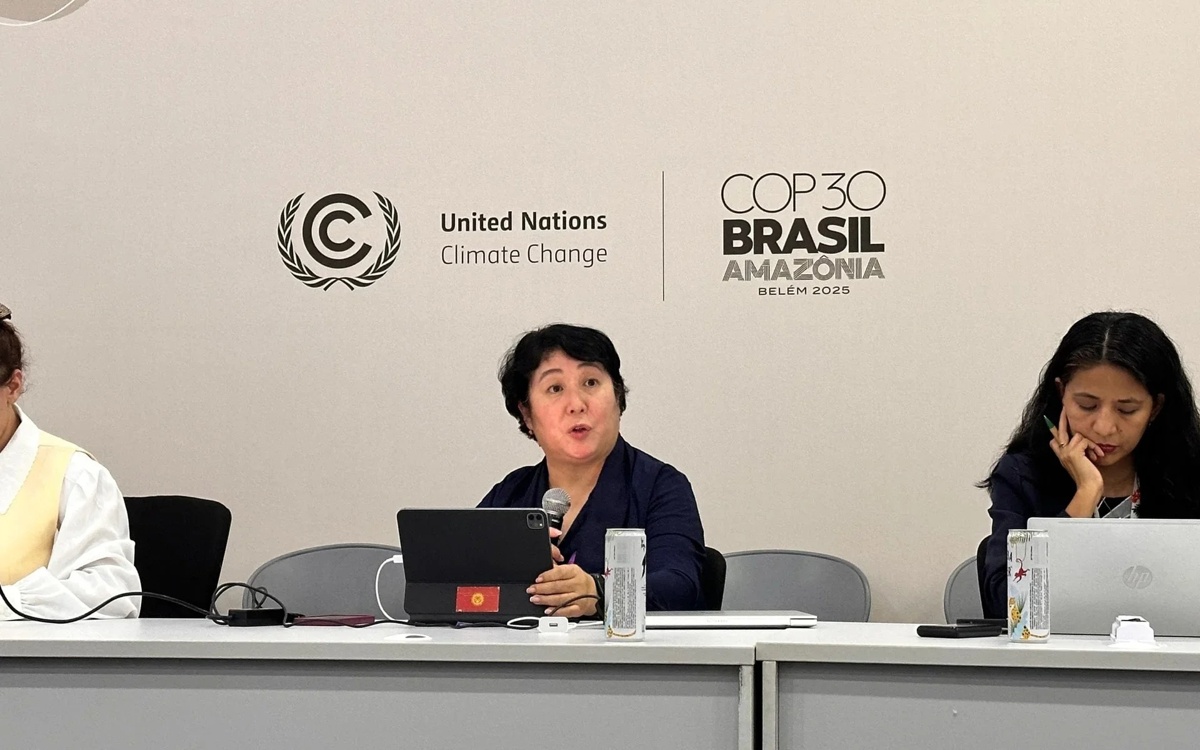Colorado mountain towns see a rare summer slump in visitors as statewide tourism slows – The Colorado Sun

Report on Colorado’s Tourism Economy: A Shift Towards Sustainable Management
An analysis of Colorado’s tourism sector reveals a significant plateau in economic activity, particularly on the Western Slope, following several years of record growth. This slowdown presents critical challenges and opportunities for aligning the state’s tourism model with the United Nations Sustainable Development Goals (SDGs), specifically focusing on sustainable economic growth (SDG 8), sustainable communities (SDG 11), and responsible consumption patterns (SDG 12).
Current State of the Tourism Economy
After a decade of consistent expansion, key indicators point to a market correction. The trend of record-setting visitation and spending appears poised to end, necessitating a strategic reassessment to ensure long-term economic and social resilience.
Key Performance Indicators
- Overall Visitation: While total visitor numbers increased slightly in 2024 to 95.4 million, this growth was driven by day-trippers. Overnight visitation, a more lucrative segment, reported no growth for the first time since 2014 (excluding the pandemic).
- Accommodation Metrics: Statewide hotel occupancy declined by 2% through June, with a corresponding drop in revenue. Short-term rental bookings for the first quarter of 2025 saw a 10% year-over-year decrease.
- Ski Season Traffic: The 2024-25 ski season recorded 13.8 million visitors, a decline from the previous three seasons.
- Regional Spending: Taxable sales in 18 Western Slope towns showed a marginal decrease from the previous ski season, halting a long-term growth trajectory.
Challenges to Sustainable Tourism Development
Several factors are contributing to the current slowdown, each with implications for the state’s ability to achieve its sustainable development objectives.
Collapse of International Tourism and its Impact on SDG 8
A severe decline in international visitors poses a direct threat to achieving SDG 8 (Decent Work and Economic Growth). These visitors are critical for a sustainable tourism model due to their higher value.
- High-Value Contribution: International travelers stay longer (average of eight days) and spend three to five times more than domestic visitors, generating significant economic benefit with a relatively smaller footprint.
- Sharp Decline in Bookings: Compared to 2024, bookings are down significantly from key markets:
- Canada: -58%
- Europe: -39%
- Australia/New Zealand: -21%
- Economic Vulnerability: The loss of this high-value segment undermines the “quality over quantity” approach, which is central to SDG 12 (Responsible Consumption and Production), and threatens the 188,210 jobs supported by the travel industry.
Community Well-being vs. Economic Growth (SDG 11)
The tension between tourism-driven economic activity and local quality of life is a core challenge related to SDG 11 (Sustainable Cities and Communities). This is most evident in the debate surrounding short-term rentals (STRs).
- Regulatory Measures: In response to resident concerns about housing availability and overcrowding, many communities have implemented STR regulations, such as caps and increased fees. These actions aim to preserve the community character and ensure housing for local workers.
- Economic Consequences: The vacation rental industry warns that these regulations increase costs and reduce competitiveness, disproportionately affecting budget-conscious travelers and leading to negative economic ripple effects that are now materializing.
- Balancing Priorities: As articulated by community leaders, the ultimate goal is to find a “harmony” where businesses thrive and residents feel their quality of life is protected, a central tenet of sustainable community planning.
Economic Accessibility and Social Equity (SDG 10)
Efforts to offset declining visitor numbers by increasing room rates by approximately 4% raise concerns about equity and accessibility, touching upon SDG 10 (Reduced Inequalities).
- Pricing Out Visitors: There is a risk of eliminating an entire segment of visitors at the lower end of the economic scale, making mountain destinations exclusive to higher-income travelers.
- Market Polarization: Data shows that while affordable lodging has struggled, higher-priced properties have seen solid growth, indicating a widening gap in the market that could exacerbate social and economic inequalities.
Strategic Outlook and Recommendations
The current economic plateau requires a strategic pivot from pure growth-focused marketing to a more nuanced tourism management approach that fully integrates sustainability principles.
Re-evaluating Tourism Management
Communities like Breckenridge, which previously scaled back large events to manage overcrowding, are now reconsidering this strategy. The discussion has shifted toward “dialing some of those things back up” to attract new demographics and reinvigorate the local economy. This reflects a dynamic approach to balancing the targets of SDG 8 and SDG 11 as conditions change.
Data-Informed Policy for Sustainable Goals
The continued use of detailed analytics from firms like DestiMetrics and Dean Runyan Associates is crucial for crafting evidence-based policies. This data provides insight into visitor behavior and economic impact, allowing for targeted strategies that support sustainable growth.
- Focus on High-Value Tourism: Renewed efforts to attract international visitors are a top priority, aligning with the goal of maximizing economic impact while minimizing environmental and social strain (SDG 12).
- Support Local Economies: Ensuring tourism revenue supports local jobs ($10.4 billion in earnings in 2024) and public services ($1.9 billion in tax revenue in 2024) remains fundamental to community resilience (SDG 8 & 11).
- Promote Inclusive Growth: Strategies must be developed to maintain accessibility for diverse economic segments, preventing the exclusion of certain visitor groups and promoting the principles of SDG 10.
2024 Tourism Data Summary
Visitor Profile & Behavior
- Total Overnight Trips: 39.8 million (stable with 2023)
- Total Day Trips: 55.6 million (up from 53.8 million in 2023)
- Average Daily Spending: $594 (overnight visitor) vs. $105 (day-tripper)
- Primary Trip Purpose: Visiting family and friends (34%), followed by touring and outdoor recreation.
- Outdoor Recreation Participation: 62% of Colorado tourists participate in outdoor recreation, compared to a 49% national average.
Economic Impact
- Total Travel Spending: $28.4 billion (flat compared to 2023)
- Travel-Supported Employment: 188,210 jobs
- Travel-Supported Earnings: $10.4 billion
- Generated Tax Revenue: $1.9 billion
- Out-of-State Visitor Spending: Accounts for 82% of all travel spending in Colorado.
Analysis of Sustainable Development Goals in the Article
1. Which SDGs are addressed or connected to the issues highlighted in the article?
The article on Colorado’s tourism economy touches upon several Sustainable Development Goals (SDGs) by discussing economic performance, employment, community well-being, and the sustainability of the tourism model.
- SDG 8: Decent Work and Economic Growth: This is the most prominent SDG in the article. The text is centered on the economic health of the tourism industry, which is a major driver of growth and employment in Colorado’s Western Slope. It details visitor spending, revenue for local businesses, tax collections, and the number of jobs dependent on tourism. The slowdown in this sector directly threatens local economic stability and decent work.
- SDG 11: Sustainable Cities and Communities: The article highlights the complex relationship between tourism and local communities. It discusses how towns like Silverthorne and Breckenridge are grappling with the impacts of tourism, from budget shortfalls due to declining revenue to the controversial issue of short-term rentals affecting housing availability for local workers. The goal of finding a “harmony” between a good business environment and residents’ quality of life is a core theme of SDG 11.
- SDG 12: Responsible Consumption and Production: The article addresses this SDG through its discussion of sustainable tourism. The shift in focus from “marketing to tourists” to “managing tourism” and the preference for “quality-over-quantity” reflect a move towards more sustainable patterns. Attracting high-value international travelers who spend more but have a smaller collective footprint than large numbers of day-trippers is a strategy aligned with responsible consumption.
2. What specific targets under those SDGs can be identified based on the article’s content?
Based on the issues discussed, several specific SDG targets can be identified:
- Target 8.9: “By 2030, devise and implement policies to promote sustainable tourism that creates jobs and promotes local culture and products.” The entire article revolves around this target. It describes Colorado’s efforts to manage its tourism sector through marketing campaigns (the $1.4 million ad campaign), regulations on short-term rentals, and strategic shifts to attract different visitor demographics. The article explicitly mentions job creation (188,210 jobs) and the economic reliance of local communities on tourism revenue.
- Target 11.4: “Strengthen efforts to protect and safeguard the world’s cultural and natural heritage.” While not stated directly, this target is implied. Colorado’s tourism is built on its natural heritage—the mountains, ski resorts, and opportunities for outdoor recreation like the Ouray Via Ferrata mentioned. The discussion about managing visitor numbers to avoid overwhelming towns is inherently linked to protecting the natural and cultural character that makes these places attractive destinations.
- Target 12.b: “Develop and implement tools to monitor sustainable development impacts for sustainable tourism…” The article is rich with examples of monitoring tools. It cites data from Destimetrics for lodging reservations, Dean Runyan Associates for economic impact reports, and Longwoods International for visitor traffic analysis. These organizations provide the data (indicators) that tourism officials use to monitor the economic and social impacts of tourism and adjust their strategies accordingly.
3. Are there any indicators mentioned or implied in the article that can be used to measure progress towards the identified targets?
Yes, the article is filled with quantitative and qualitative indicators that can be used to measure progress.
-
Economic Indicators:
- Total visitor spending: $28.4 billion in 2024.
- Growth in spending: Described as “flat” compared to the previous year.
- Tax revenue from tourism: $1.9 billion in 2024, a 1.3% increase.
- Earnings from tourism-related jobs: $10.4 billion in 2024.
- Return on investment for marketing: A $1.4 million ad campaign generated $1.44 billion in spending.
-
Employment Indicators:
- Number of travel-dependent jobs: 188,210 in 2024.
- Job growth: An increase of 3,720 positions in 2024.
-
Visitation and Occupancy Indicators:
- Total number of visitors: 95.4 million.
- Number of overnight visitors: 39.8 million, with no growth from 2023.
- Hotel occupancy rate: Down 2% through June.
- Short-term rental bookings: A 10% annual dip in the first quarter of 2025.
- Decline in international visitors: Bookings from Canada are down 58%, from Europe are down 39%, and from Australia/New Zealand are down 21%.
-
Community Well-being Indicators (Qualitative):
- Local government budget status: Silverthorne is preparing for budget cuts due to declining tax revenue.
- Resident sentiment: The article mentions a shift from concerns over “growing numbers of visitors overwhelming the town” to a desire to “dial some of those things back up” like hosting more events, indicating a change in the balance between economic need and quality of life concerns.
4. Table of SDGs, Targets, and Indicators
| SDGs | Targets | Indicators |
|---|---|---|
| SDG 8: Decent Work and Economic Growth | Target 8.9: Promote sustainable tourism that creates jobs and promotes local culture and products. |
|
| SDG 11: Sustainable Cities and Communities | Target 11.4: Strengthen efforts to protect and safeguard the world’s cultural and natural heritage. |
|
| SDG 12: Responsible Consumption and Production | Target 12.b: Develop and implement tools to monitor sustainable development impacts for sustainable tourism. |
|
Source: coloradosun.com

What is Your Reaction?
 Like
0
Like
0
 Dislike
0
Dislike
0
 Love
0
Love
0
 Funny
0
Funny
0
 Angry
0
Angry
0
 Sad
0
Sad
0
 Wow
0
Wow
0


-1920w.png?#)







































































